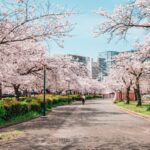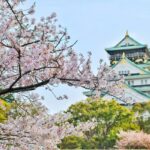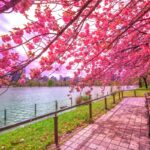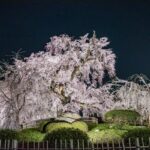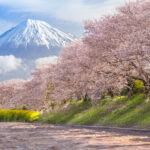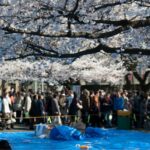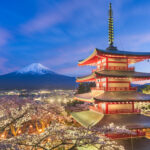Time of year plays a big role in many peoples’ decision to travel, and can have a big influence on where they choose to go. Want to visit Japan, but aren’t sure when to go? Luckily, every time of year is a great time to vacation in this unique country. There are tons of things to do in all regions, no matter when you’re visiting.
From viewing cherry blossoms in the spring to enjoying winter in the northern prefectures, there’s tons of natural beauty to discover in Japan, as well as unique festivals and special events held throughout the year. Moreover, you’ve got your pick of different climates throughout the year, depending on which prefecture you decide to visit. Japan is a country full of activities all year round!
Spring, summer, fall or winter, you can’t go wrong charting a course for adventure to Japan. Here are some of the highlights of the country, season by season, region by region. Keep these points in mind as you begin to plan your time abroad.
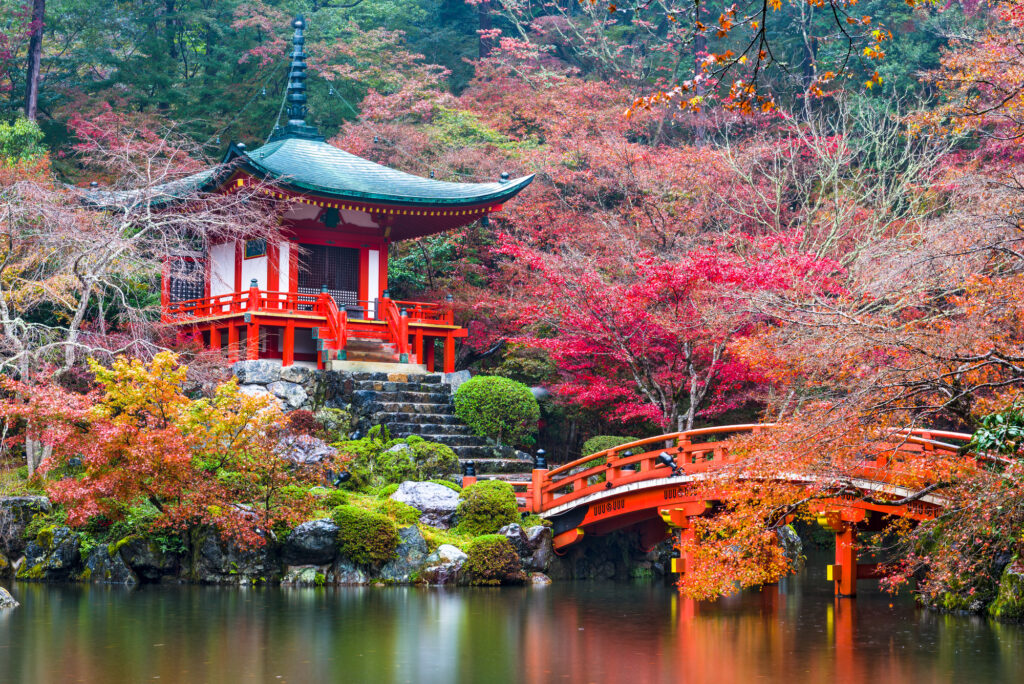
Things to do in Japan in the Spring
Springtime arrives in most of Japan starting in mid-March, continuing through May. The country experiences pleasant, cool temperatures averaging between 40 to 65 degrees Fahrenheit. There can be an equal mix of sunny and rainy, windy days in Japan this time of year, so visitors should bring both warm-weather and cold-weather clothing.
Why do so many visitors flock to Japan in the Spring? Many come to see the beautiful flowering plum blossom and cherry blossom trees. If you’re traveling to see this stunning sight in person, make sure to keep an eye on the weather as it can affect peak blooming times. Also, bloom times depend on geography, with trees blossoming earlier in the southern regions of the country.
Spring is one of the peak seasons for tourism in Japan, attracting both local and international visitors alike. If you’re planning a spring trip to Japan, here are some of the best things to see and do:
- Check out Takayama Matsuri in April, one of Japan’s most beautiful festivals. Held in the old town of Takayama, you’ll witness colorful floats and shrines paraded through the city streets.
- Held every year on April 1 in the hot spring town of Beppu, Beppu Hattou Onsen Matsuri is a fun spring festival where the city’s hot springs are open to the public for free. There are also other special events, including parades and markets.
- If you’re visiting Tokyo in May, witness the incredible Sanja Matsuri festival. Held on the third full weekend in May, this special event features colorful floats and shrines, accompanied by musicians and dancers dressed in Edo-period costumes.
Things to do in Japan in the Summer
Summer arrives in Japan in the months of June through September. If you’re visiting in the summer months, the weather can get hot, with temperatures throughout the country ranging from 70 to 90 degrees Fahrenheit, on average.
Summer is an excellent time to visit Japan, mainly because there are tons of outdoor activities and festivals to enjoy. Many of these festivals, or matsuri, include majestic firework displays, spectacular parades and unique decorations.
Japan is prone to the occasional heat wave during the summer months, but it this season also lends itself to a huge array of festivities and outdoor opportunities. Here’s just a sample of what Japan has to offer in the warm summer months:
- Held on July 24 and 25 every year, Osaka’s Tenjin Matsuri celebrates the god of scholarship. This matsuri concludes with impressive fireworks displays over the Okawa River—a sight not to be missed.
- Kyoto’s most important festival spanning the entire month of July, Gion Matsuri has been held in the summer for over 1,000 years. Witness parades of enormous floats, called yamaboko, experience delicious street foods and so much more.
- One of Japan’s most popular fireworks festivals, the Sumidagawa Fireworks Festival is held on the last Saturday in July. It features a long firework display and tons of vendors serving traditional street foods.
Things to do in Japan in the Fall
Japan’s fall or autumn months arrive in late September through December. Temperatures fall to the 50-to-70-degree Fahrenheit range, the perfect climate for enjoying the country’s incredible scenery.
Many tourists flock to Japan in the fall to enjoy koyo, or autumn leaves viewing. The best spots for viewing fall colors include Kyoto’s Arashiyama and the Japanese Alps, but you can enjoy viewing the changing colors of the leaves all throughout the country (if you’re exploring the Japanese Alps, make time to check out Shirahone Onsen for a truly relaxing time). This time of year is less busy when it comes to tourism, making it an ideal time for many travelers to visit the country.
Fall is gorgeous no matter which prefecture you visit, and there’s always something going on during this amenable time of year. Here’s what to do in Japan if you’re planning a fall visit:
- If you find yourself in Tokyo on the second weekend in September, check out the Kichijoji Autumn Festival. Immerse yourself in the boisterous street fair, featuring a portable mikoshi shrine.
- Hokkaido’s biggest food festival is held throughout September. Called the Sapporo Autumn Fest, it’s well-known for its several themed venues, each featuring a distinct vibe, vendors and foods.
- In early October, check out the Nagasaki Kunchi Festival, Nagasaki prefecture’s most famous festival. This celebration includes an interesting mix of Dutch and Chinese traditions, since the area has long been associated with travel and trade.
Things to do in Japan in the Winter
Winter is a special time of year to visit Japan. While the weather gets cold—averaging between 30 to 45 degrees Fahrenheit from late December to mid-March—you’ll still find tons of interesting things to do around the country.
This is a great time of year to visit Japan, as tourism slows down and attractions are quieter. There are several exciting outdoor events you can partake in; however, winter in Japan is an excellent time to explore indoors—from the country’s diverse cuisine to its many museums and cultural centers.
While winter can be frigid in some areas of the country, it’s mild and temperate in others. If you find yourself in Japan in the winter, check out some of these special events:
- If you’re planning a February trip to Japan, the Sapporo Snow Festival in Hokkaido prefecture is a must see. This winter wonderland festival features tons of twinkling lights, ice sculptures, delicious foods and so much more.
- The second largest snow festival in Hokkaido after the Sapporo Snow Festival, Asahikawa Winter Festival is also held in February in Asahikawa City. The festival includes impressive snow and ice sculptures, especially beautiful when seen at night.
Always consider the prefecture you’re visiting
Japan is a unique country in that, depending on where in the country you visit, you could experience a very different climate that you expect. At any given time of the year, the season can feel very different from one prefecture to another.
Eastern Japan is known for having very hot and humid summers, followed by cold winters that bring very heavy snows with them—especially on the Sea of Japan side and in mountainous areas. If you’re visiting the Kanto/Koshin, Tohoku, Hokuriku or Hokkaido regions, intermediate seasons are often the best time to go: fall or spring, or the early part of either summer or winter.
If you’re headed to Western Japan, expect similar summers with high heat and humidity. However, this region tends to have milder winters. Chugoku, Kyushu, Shikoku and Kinki are some of the best regions to visit in the early or late summer, and throughout fall and winter. Try to avoid going during the peak of summer, where temperatures trend into the triple digits.
It’s also worth noting that Okinawa and Amami operate on something of an independent climate schedule. Because these regions are both below the Japanese continent, they have a subtropical oceanic climate that tends to stay stable all year round. This is also part of the reason these areas have thriving expat communities!
What’s the best season to vacation in Japan?
While there’s certainly something to do all year round in Japan, you’ll want to consider the various seasons when it comes to planning your trip. Some festivals or happenings only come around at a specific time during the year, while some regions lend themselves to exciting experiences all year round. In truth, every season of the year is a great time to vacation in Japan.
before you plan your trip to Japan, ask yourself what you’d most like to see or experience. Then, plan your trip to a certain prefecture round the time of year when activities are scheduled. Aside from special events, Japan’s natural beauty and scenery can be enjoyed year-round, no matter what part of the country you’re traveling to. Pack accordingly and you’ll have no trouble enjoying yourself.
Start planning your visit today and make the most of your trip to Japan, regardless of when you’re traveling!
- How Much Money Can You Make Teaching English in Japan? - December 12, 2022
- The Best Places to Teach English in Japan - December 9, 2022
- The Best Credentials for Teaching English in Japan - December 8, 2022


